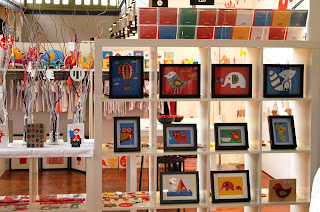Welcome to Market Stall Series- Part 4
Most of the effort that goes into a tradeshow or a market event is always the set up stage, we are so focused on the layout of the stand, the right product for the show and the best signage for the stand etc that by the time the show is over, you are all exhausted and proud you made it through the whole experience in one piece. The fact is, you are just half way through the overall experience, and it’s the last half “The Follow Up” process that really completes the whole event experience.
Whether you are planning a trade show or a market event these tips can help you execute the final task of your show and it is the most important task of all “The Follow Up” process.
Plan Ahead for Follow Up
Before you do the show plan on exactly what your method will be to follow up with prospects:
· Are you sending a letter?
· Phoning them?
· Emailing them?
A predetermined plan effectively forces you into a follow-up routine with little brain power expended.
Follow Up Immediately
“An excuse becomes an obstacle in your journey to success when it is made in place of your best effort...” - Bo Bennett
This section is where lots of stall holders fail to execute. They spent good money on the show and fail to follow up with their prospective clients. Why is this so you might ask?
From my coaching experience here are some of the reasons my clients come up with to avoid the follow up with their customers:
People are too tired from the show to talk to me at the moment
They just checked over 80 stands. They need time to digest the information.
They have my product kit and I have already spent a good fifteen minutes chatting with them and if they are interested they’ll call me.
I just finished the show and I need time to chill out and need to plan for the next market.
I missed out two days of work and I must clear my inbox.
Do these sound familiar? I’m sure you can come up with even better ones. The fact is none of these statements are true. Making excuses are only ways to justify your own actions and it does not help you moving forward with your business.
The only way to get a good response is to follow up immediately while the prospects still remember you. The longer you wait the less likely you are to follow up, and the less likely your prospect will remember who you are and what you do. An initial contact sets you apart from everyone else at the show, your prospects will be impressed and appreciate you call.
Classify Your Leads and Follow Up Accordingly
Some clients do this by separating leads into A, B, and C leads, but I don’t know if that’s necessarily the best way. If I pass those off, my gut tells me that only the A leads are going to be called, and the B and C’s will never get a call.
It’s better to separate leads by actions. We break ours into the 4 categories:
1. Hot Leads
2. Warm Leads
3. Nurture Leads
4. Cold Leads
Hot leads are the A leads, who you’ve had a conversation with, are a good fit, and have a budget. They are keen to do business with you.
Warm leads are leads, which has demonstrated a true need for your product or service and has responded to your business pitch. Warm leads are much easier to convert to the next stage or at least willing to have a conversation about the product.
Nurture Leads are leads dependent on how qualified they are. Obviously they didn’t demonstrate as pressing a need as the Warm Leads, but they still warrant an info kit, or a simple letter to keep you in their mind. This will be less time consuming for you, but will create the touch that will leave your lasting impression with them.
Cold Leads are the disqualify leads. Leads that are going nowhere and they have no future prospect.
Have an Actionable Item for Turn Down’s
Obviously you want all your leads to immediately buy your product or service, but that isn’t realistic. There should be an alternative to purchase, such as a web cast, news letter, or other offering that will keep prospects engaged. You can develop automated, multi-touch marketing programs to continuously engage Nurture Leads and lead them through the pipeline. By nurturing these leads after the tradeshow is over, you’ll keep them around until they are ready to purchase.



